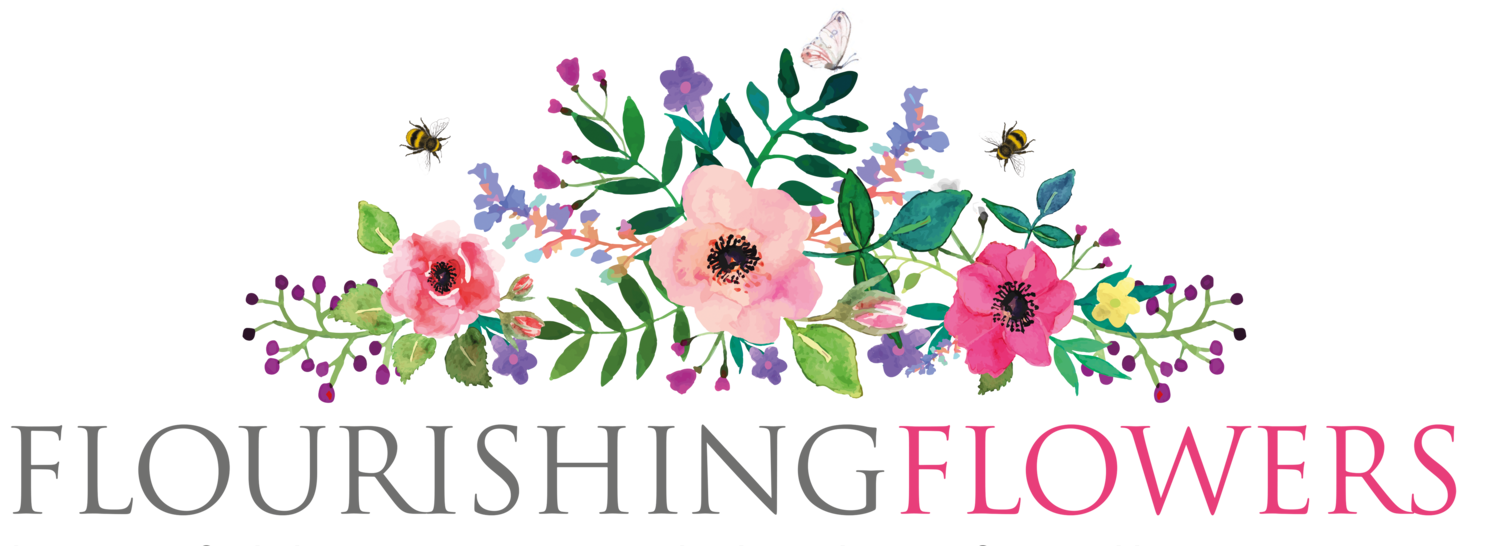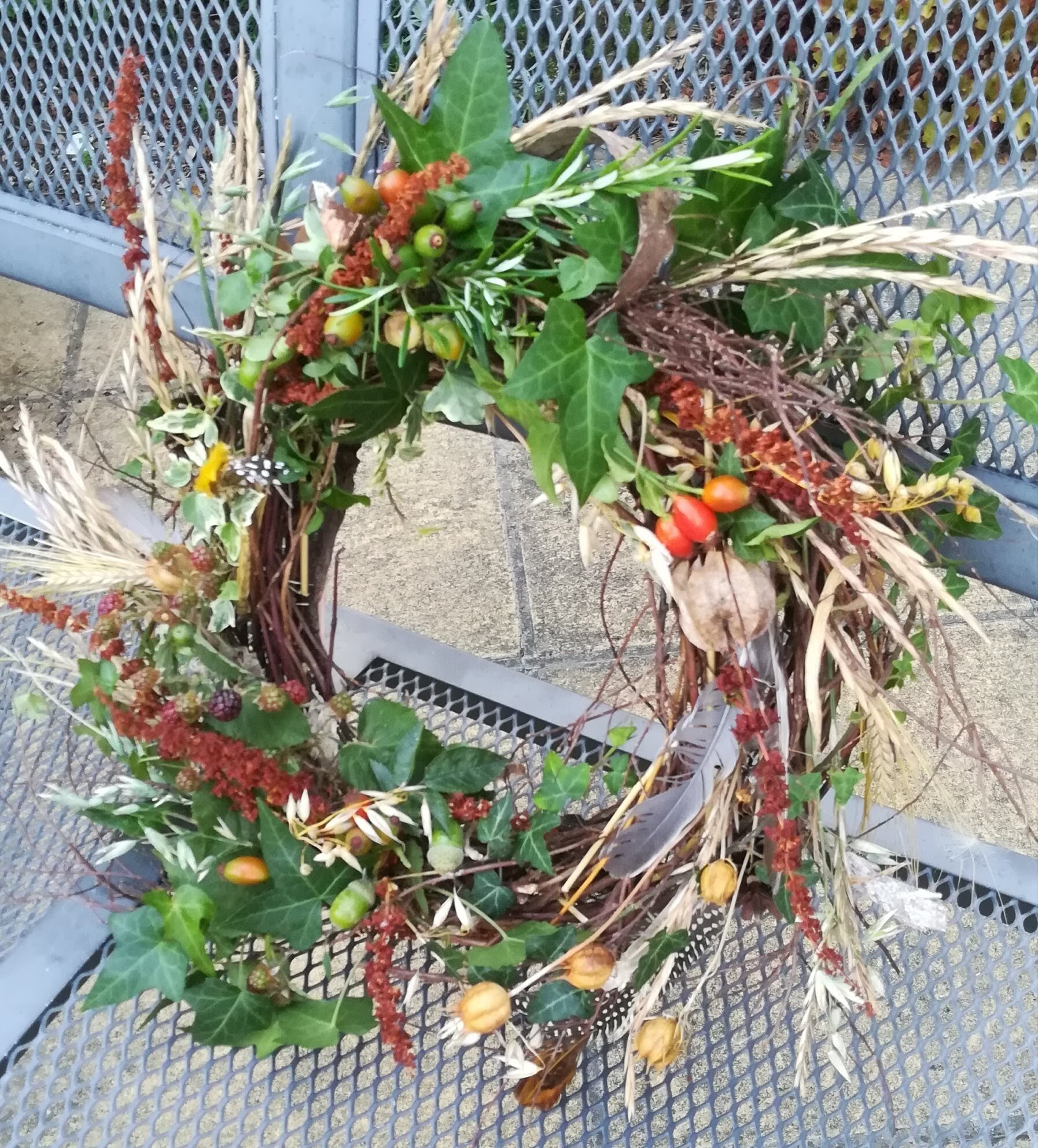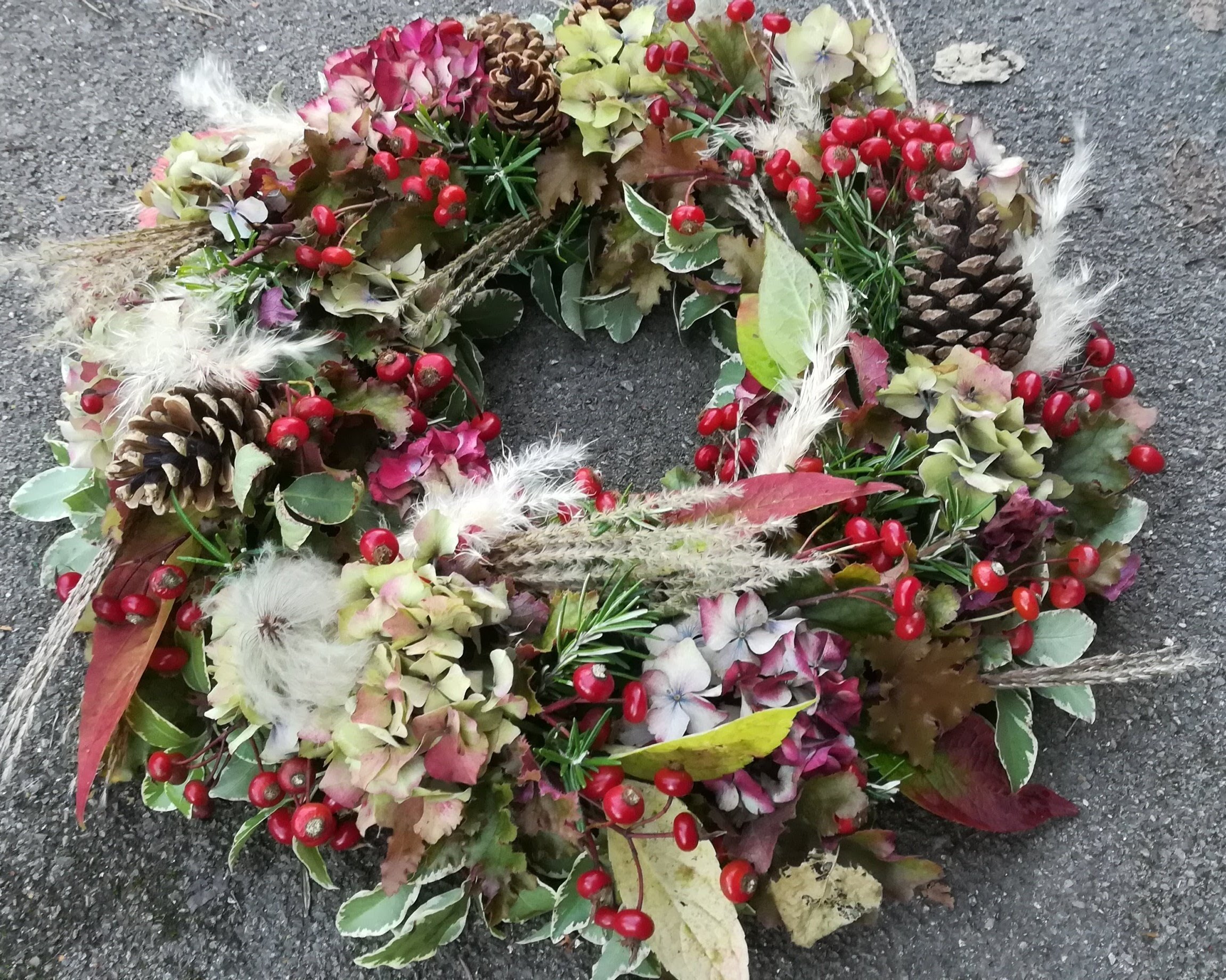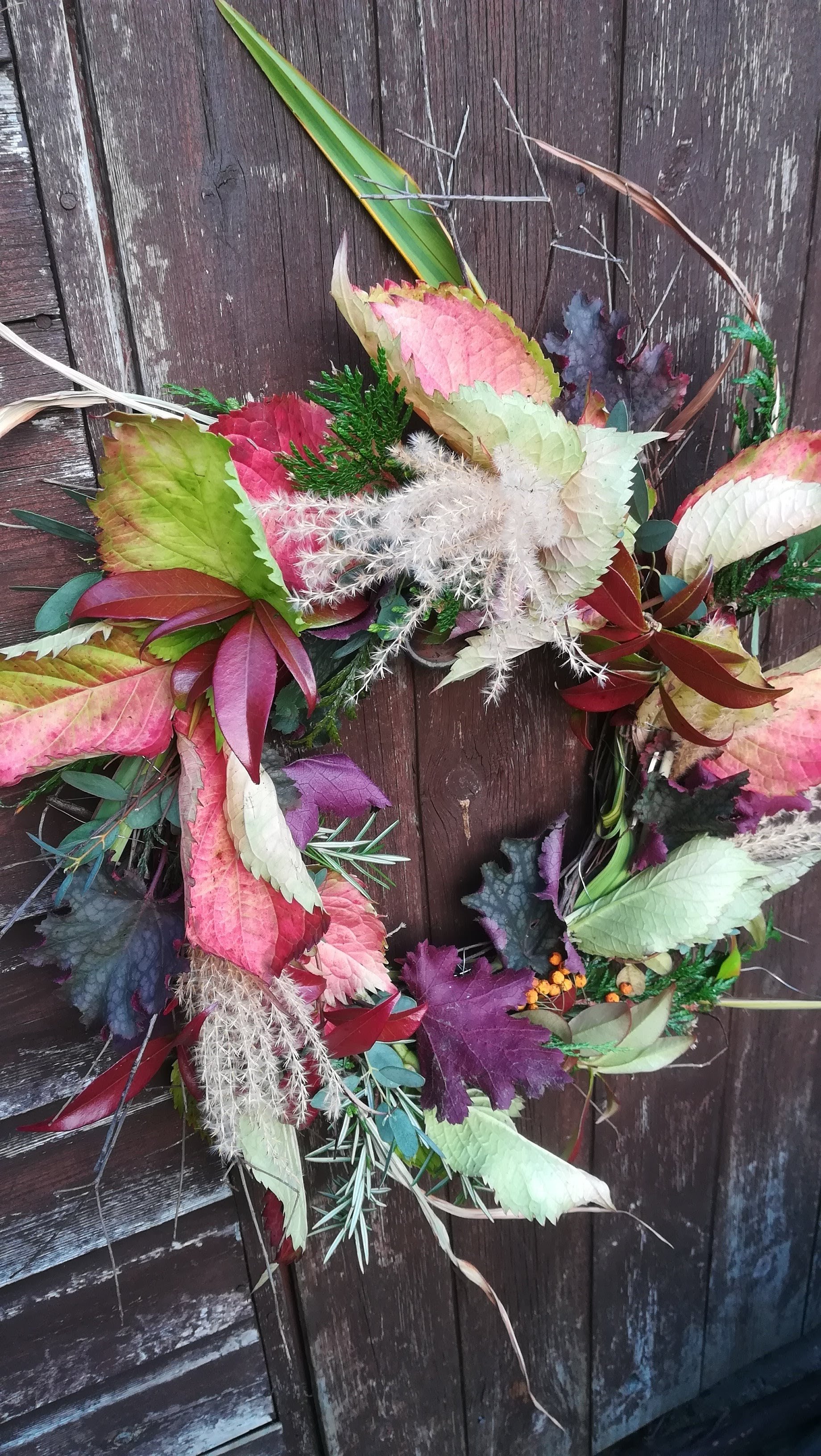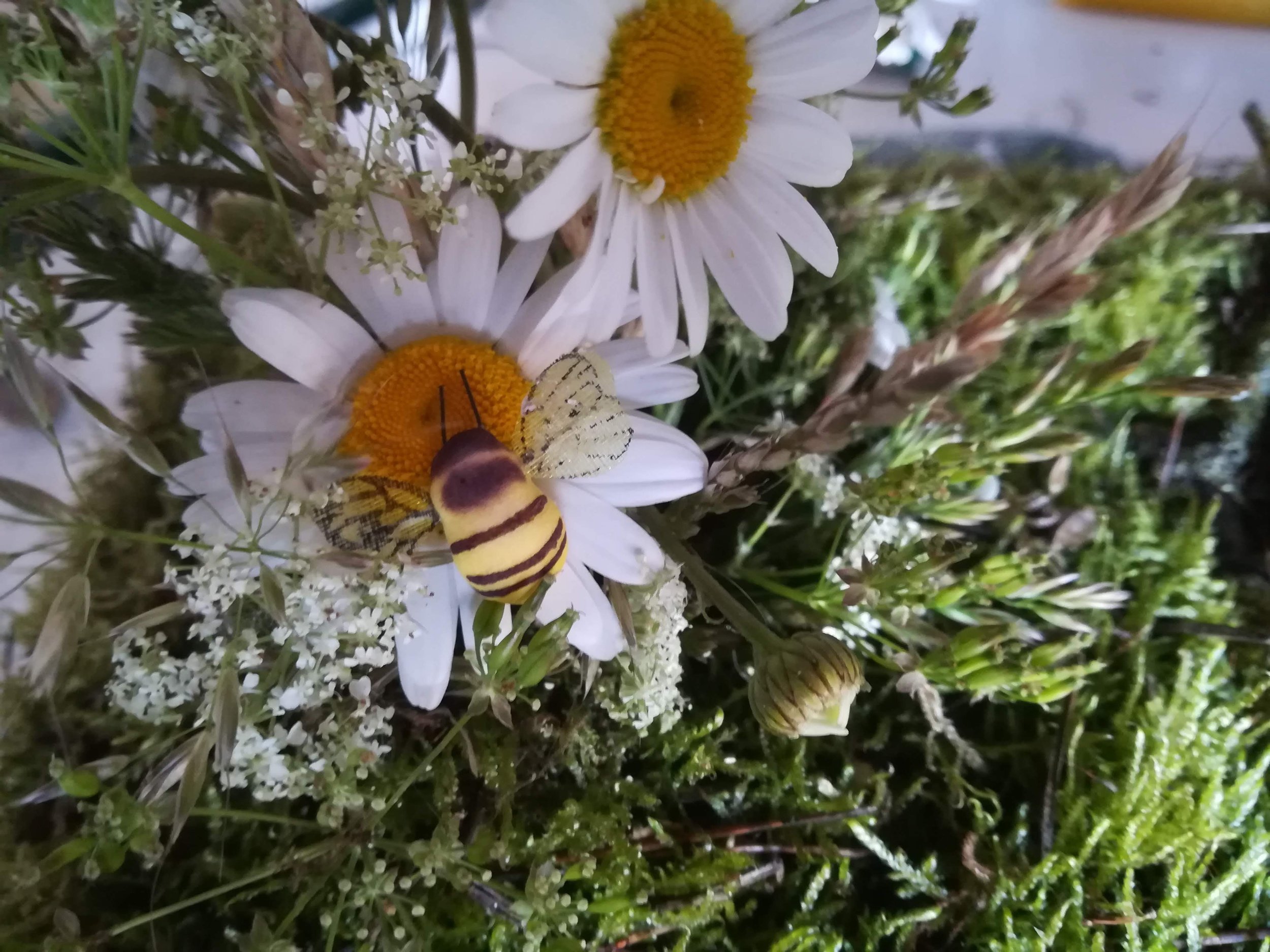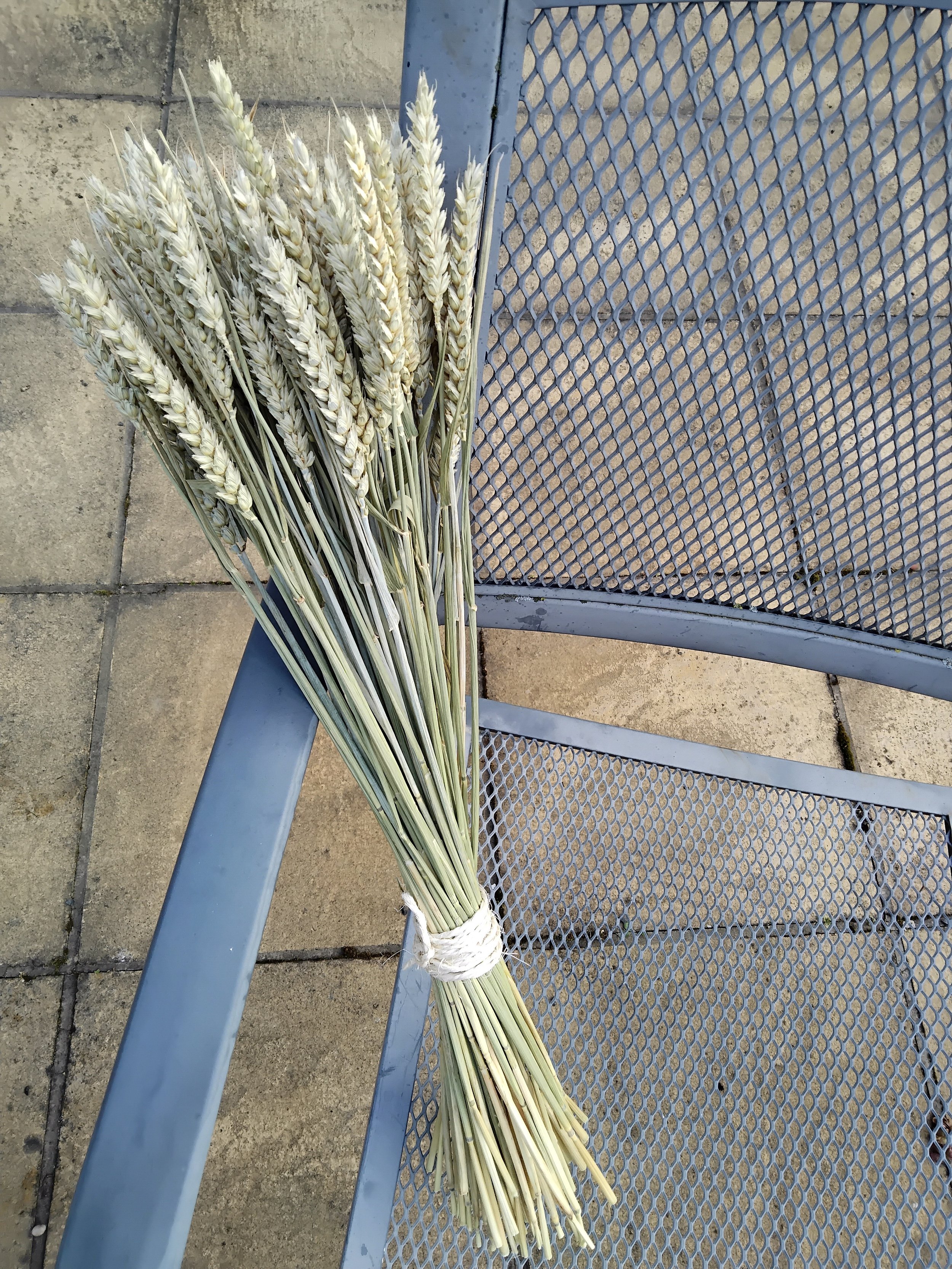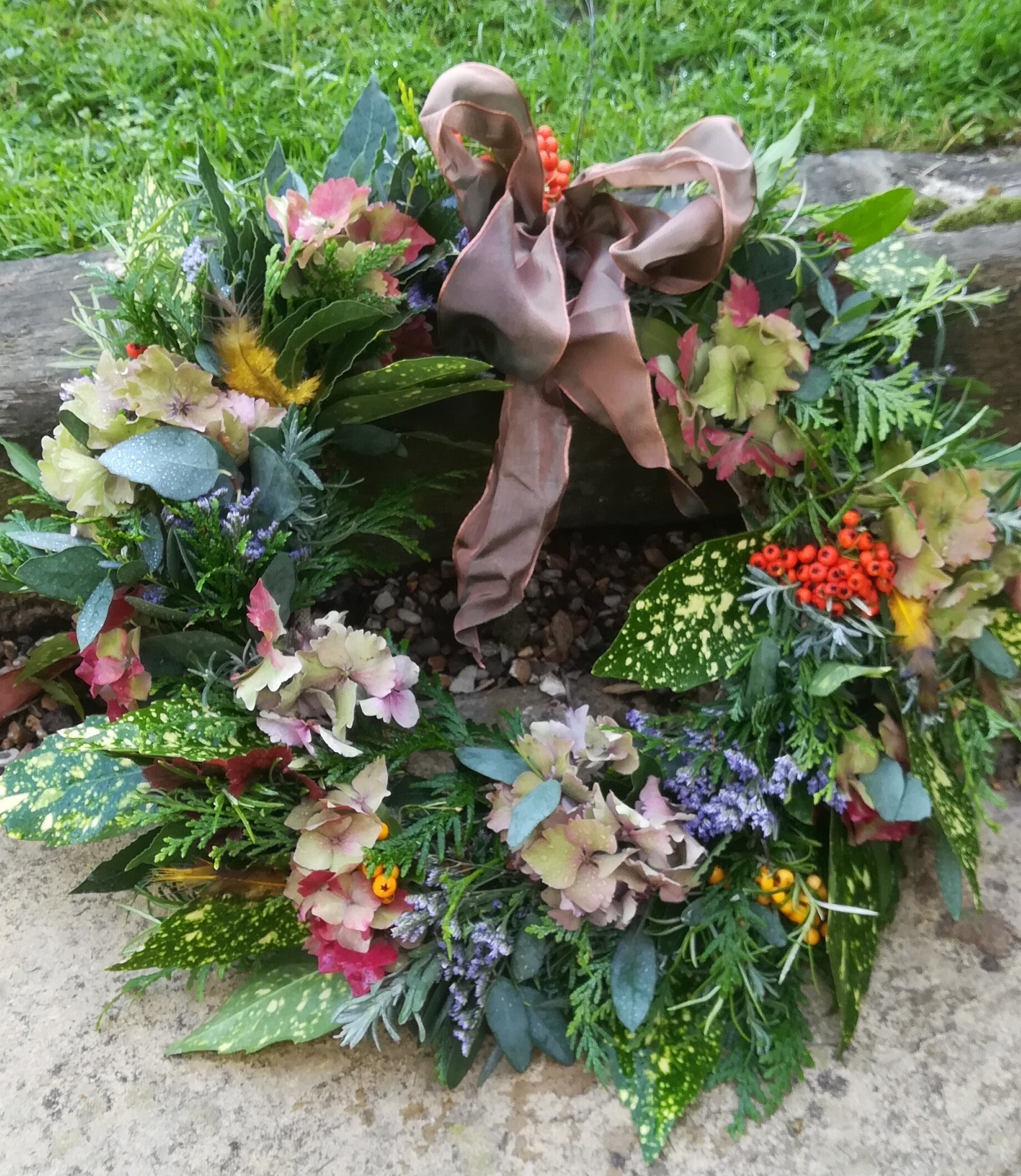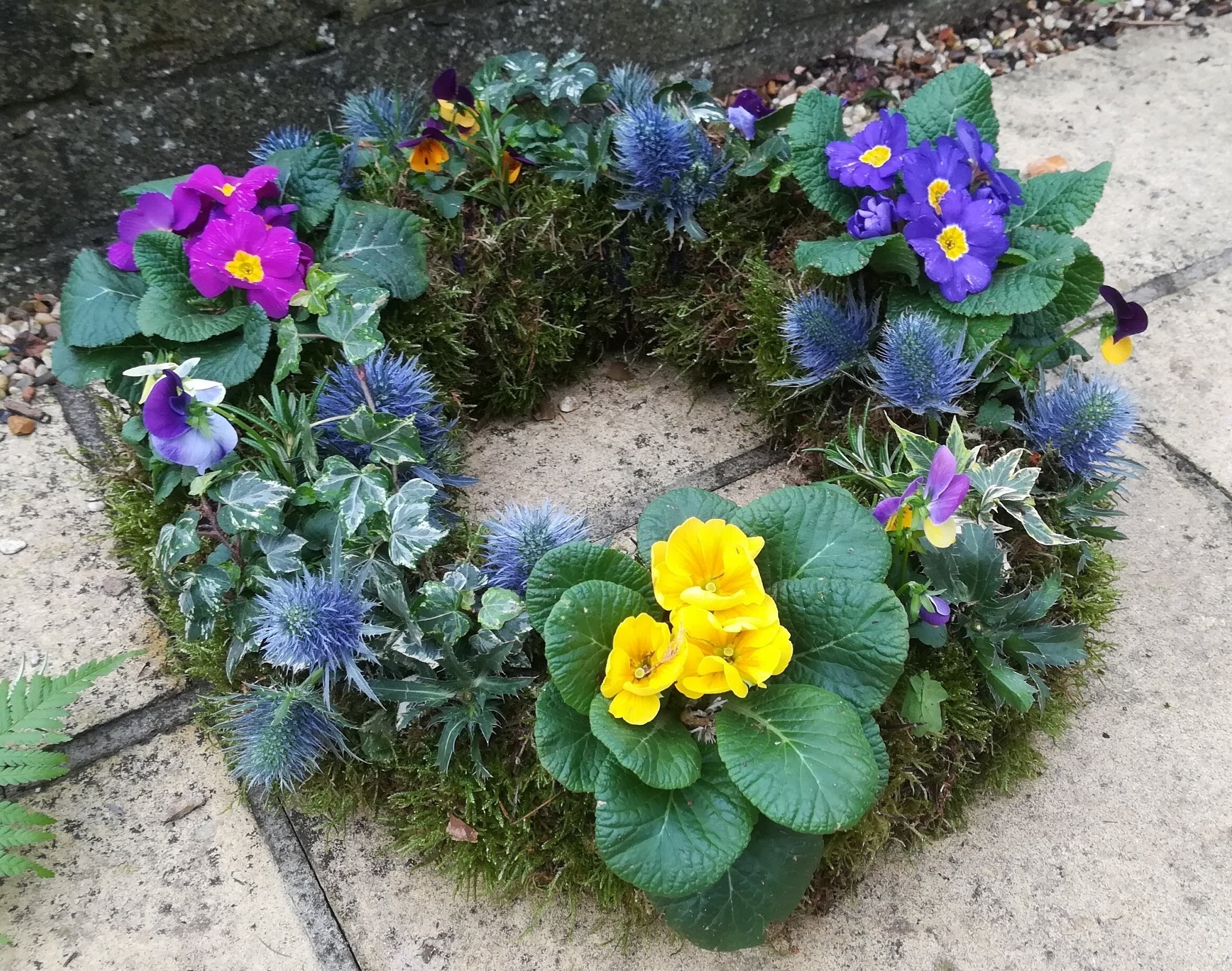The abundance of summer gives way to less choice in flowers (particularly local farm grown) in Autumn, so it's sometimes necessary to consider using other items within the floral farewell pieces.
When arranging autumn florals there are so many wonderful natural elements to bring in, it's not always about the blooms; there are seed pods, skeletal stems, horse chestnuts, cones and acorns to name a few. Leaves in an array of colours. Pumpkins and gourds. If someone was an avid gardener and loved their plot or allotment why not include fruit or veg into the design?
For those who appreciate a more rustic and natural look, incorporating twigs, branches, and dried grass can create a beautiful autumn-inspired piece. These elements bring a sense of nostalgia and the beauty of nature's cycle into the arrangement. Adding in some dried lavender or lavender essential oil can also bring a calming and soothing scent to the arrangement.
One flower that comes into its own in Autumn is the Chrysanthemum offering beautiful shades of bronze, pink and red or sunny yellows, golds, creams and whites. Did you know that the Chrysanthemum means different things to different people and cultures? In Japan the flower signifies death and whilst many of us associate it with this too, it can also represent rebirth. The flower can be used to remember a long life full of happiness and joy.
The garden design for a cherished Dad (below) reminds us of the change in seasons. Cones and bark add interest and different textures, whilst rosemary signifies remembrance of the loved one. Dahlias, like Chrysanthemum, epitomise the tones and seasonality of Autumn.
As a funeral florist, it is always important to listen to the wishes and preferences of the grieving family. Whether they prefer a more traditional floral arrangement or want to incorporate the beauty and symbolism of autumn, there are endless possibilities to create a unique and meaningful tribute.
In conclusion, autumn offers a variety of unique and creative options when it comes to funeral flower arrangements. By incorporating natural elements, using seasonal flowers, and adding personal touches, you can create a beautiful and meaningful tribute that honours the life of the departed. Remember, it's not just about the blooms, but also about bringing in the essence of the season and the memories of the loved one.
